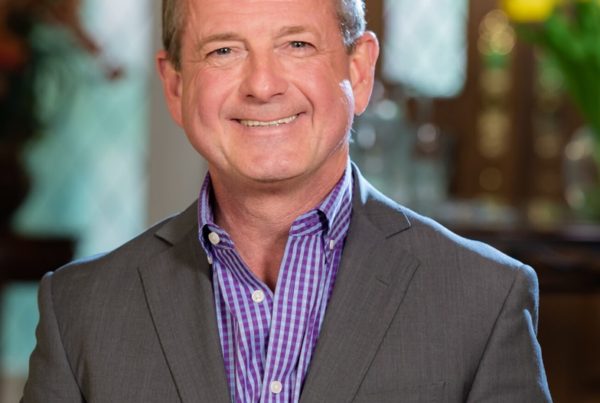Podcast: Play in new window | Download
Subscribe: RSS
How do you collaborate at scale as a leader?

Jeremy Scrivens
Jeremy Scrivens is an Appreciative Futurist & Collaboration & Innovation Catalyst. He is a Director of The Emotional Economy at Work, a global thought leader, and a consultant on building collaboration in a digital world – for innovation, social good, and the future of talent.
Jeremy works with enterprises to coach innovation, collaboration, and engagement at scale in the Summit (physical) Room and the Social (virtual) Room. He deploys the principles and methods of positive transformation to engage talent, people, and communities to imagine and co-create the future of work.
Jeremy has a track record for growing global influence around thought leadership on the future of work. He is a sought after speaker, transformation facilitator, culture catalyst, and future of leadership coach.
Jeremy has received a number of accolades including the Top 50 Future of Work Influencers, the Top 10 tweeters on economic transformation by the UK Guardian, the Top 100 HR Influencers, the Top 100 Digital Influencers by rise.global, and the Top Business Thinkers Australia 2018 by SmartCompany
What We Discuss With Jeremy Scrivens In This Episode
- How has leadership changed?
- The 2 streams of leadership model in the future of work
- How tech is bringing everything to scale
- The social room: bringing in the non-usual suspects into the room
- Revolutionizing work through a collaboration of strengths
Transcript Highlights
How Leadership Has Changed
Technology has a huge impact because we could use it to either diminish or augment humanity. As leaders, we have a choice and at some point, we come to a crossway.
We took people out of the homes out of the communities, and the marketplaces and put them into these big buildings called factories. And individuality was lost. The stories were lost before we knew it the systems were in place. Then tech moved to mass production, efficiency, speed, cost, quality and so on.
Automation takes out the transactional work so that we can release people to do meaningful work. A lot of our leaders and managers have been taught that view of business. The new tech is so powerful and robotic.
Replacing people with tech seems to be a no brainer but there is no sense of responsibility around what happens to people after that. The kind of leadership we see in the U.S is deficit and competitive, not collaborative.
The 2 Streams of Leadership Model in the Future of Work
The First Stream of Leadership Model: The Expert
This stream puts the design of everything in the hands of a few. The leader comes out as the expert, the one with the vision and strategy.
They make decisions from the top to bottom. Organizations are now siloed and structured around monitor control. Vision is limited to only a few people. A company now owns the data and the tech and they control information.
The Second Stream of Leadership Model: The Host
This is the opportunity for convergence. Convergence means shifting from the parts of things to the wholeness of things. We wrap the conclusion around the individual. Now, our phones have converged because the phones are in the hands of the individuals. But because organizations have not yet converged, what leadership is going to do now is to make new leaders.
These leaders see that the future is the design of work, starting not with the organization, but with the individual. Leadership shifts from being a leader as an expert – to leader as a host of a growing collaboration of individuals coming together around deep conversations and things that matter – to reform and reshape work around a collaboration of strengths and a shared purpose.
During this COVID crisis, we’re seeing some of these host leaders starting to emerge and taking the time out to have those kinds of reflective conversations. The answer lies within your own conversation if you just have the courage to act as a host, not as an expert.
How Tech is Bringing Everything at Scale
Tech brings things together at scale. People connect with each other who are thousands of miles apart and they are forming collaborations at scale. True innovation is a conversation around strengths, not weaknesses. In a whole host of things, everyone has a part to play the principle of social constructionism that no two people see the world the same way.
For a first stream leader, that is a dangerous thing because you don’t want people to see the world a different way. You want people to see the world as you see it. And because you try to get them to conform, you lose creativity and innovation because you only see one part of what’s actually happening.
As a second stream leader, you need to get people back together and engage them in a growth topic, not a problem-solving topic. Engage them in discovering the best or the positive. What is exceptional best? Imagine a new future where our best becomes a normal experience.
Switch the conversation – from fear to love, from what doesn’t work to what works. You don’t look at the darkness. Instead, you look at that one light that’s glowing in the darkness and get near to it.
At the heart of that is the idea of people and organizations as living human systems, not as static machines.
The Social Room – Bringing the Non Usual Suspects into the Room
It’s about starting to see all these new openings and connect with all sorts of beautiful people like yourself. Collaborate with people on social media and have conversations all around the world. This shuts down as a single enterprise because you’re part of a global ecosystem.
These are the social groups where people engage on social. It starts with these questions:
- If you could chase something for the better in your world by collaborating at scale with others who believe what you believe, through social media, what would be the story?
- With whom are you collaborating?
- What’s your personal hashtag?
- What’s your shared hashtag?
A second stream company carries out conversations routed right through the social loop with collaboration at scale. They’re bringing in more strengths and stories into play, and they’re hosting conversations that really matter to people.
Revolutionizing Work Through a Collaboration of Strengths
Remote working comes out of a first stream leadership model. But what’s people are now going back into the homes and they’re starting to experience a different kind of lifestyle. It’s such a different perspective as they’re getting more involved with their kids. We see them as equalizers now.
We have been taught this whole concept of organization as a military organizational structure where work is defined as a job. Because of this, we limit the incredible creativity and diversity of strengths and imagination. And because we say this is your job and not someone else’s, you limit the questions you can ask about areas that you’re told not to be a part of.
However, work is a collaboration of strengths put to work by each individual. Socialism connects people and it brings people together. It’s a new way of doing work built on trust between people. Everyone becomes a salesperson and there’s nothing more commercially powerful than that.
Episode Resources
How to Collaborate at Scale in the Two Rooms: Summit and Social
Connect With Jeremy Scrivens
Did You Enjoy The Podcast?
If you enjoyed this episode please let us know! 5-star reviews for the Leaders Of Transformation podcast on Apple Podcasts, Spotify, Pandora or Stitcher are greatly appreciated. This helps us reach more purpose-driven entrepreneurs seeking to make a positive impact in the world. Thank you. Together, we make a difference!
Additional Episodes You May Like
- 326: Safwan Shah: Providing Faster Paycheck Access for American Workers
- 320: Norman Wolfe: Transforming Your Business Into A Living Organization
- 313: Andrew Hewitt: Changing The Game Of Business For Good
- 304: Rebecca Costa: The Secret to Solving the World’s Most Pressing Issues
- 299: Nicole Jansen: Celebrating Success and Embracing the Future
- 296: Jeff Gothelf: How To Make The Pace Of Change Your Competitive Advantage
- 263: Vishen Lakhiani: Facilitating Global Transformation in One Generation










